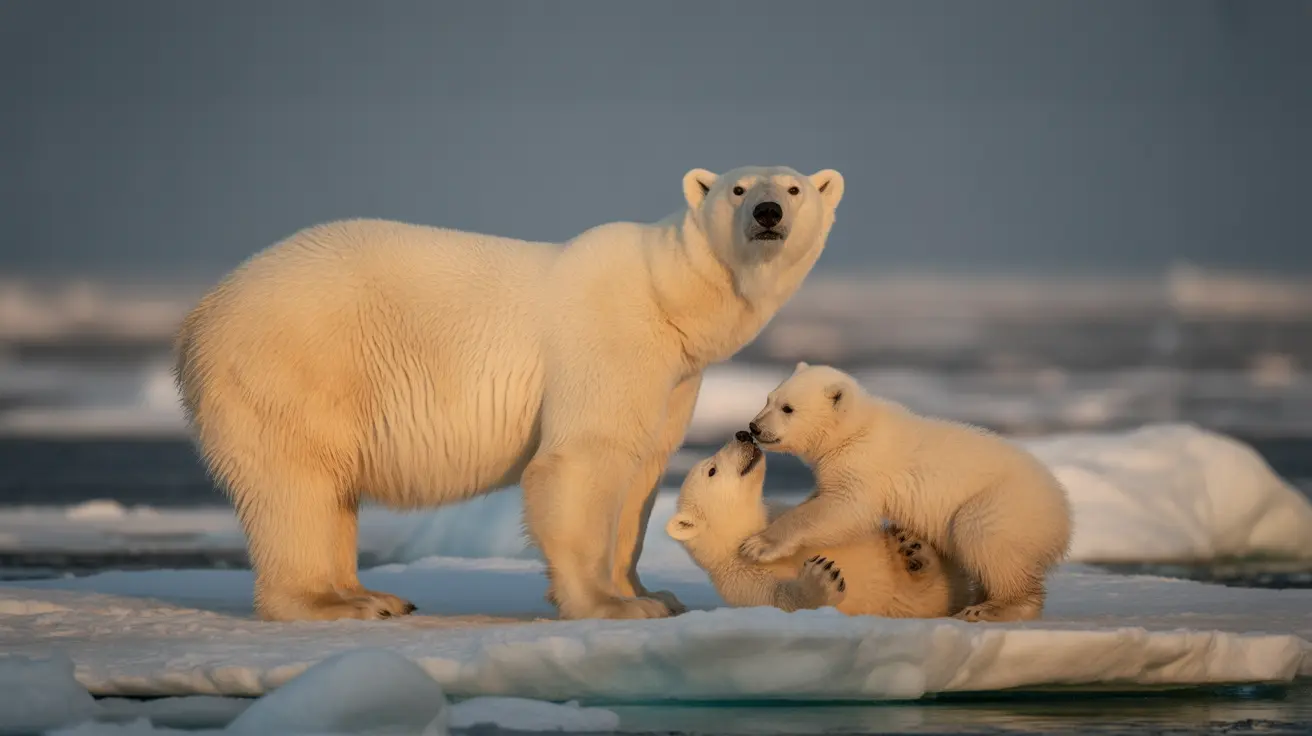Arctic Warming Effects on Wildlife
The Arctic is warming at a rate twice as fast as the global average, creating a cascade of changes that affect every level of the ecosystem. As sea ice melts earlier and forms later each year, animals that depend on frozen surfaces for hunting, breeding, and traveling face mounting challenges to their survival.
Shrinking Arctic Sea Ice
Sea ice loss represents one of the most critical threats to Arctic wildlife. This frozen platform serves as essential hunting territory for polar bears and provides crucial habitat for seals, walruses, and other marine mammals. When sea ice diminishes, these animals must adapt their behavior or risk declining populations.
Arctic Food Web Disruption
The warming climate is altering traditional food chains throughout the Arctic region. As temperatures rise, some species may find their preferred prey becoming less abundant or shifting to new areas. This disruption affects everything from tiny Arctic fish to top predators.
Arctic Ecosystem Changes
The Arctic's unique ecosystem is experiencing rapid transformation:
- Traditional hunting grounds are becoming unreliable
- New species are moving northward
- Weather patterns are becoming more unpredictable
- Vegetation changes are affecting herbivore populations
Conservation of Arctic Species
Conservation efforts are crucial as Arctic wildlife faces these unprecedented challenges. Scientists and wildlife managers are working to monitor population changes, protect critical habitats, and develop strategies to help species adapt to their changing environment.
Arctic Winter Rain Events
One particularly concerning development is the increase in winter rain events, which can create ice layers that make it difficult for animals like reindeer to access their food supply. These unusual weather patterns can lead to significant challenges for Arctic wildlife during the crucial winter months.
Frequently Asked Questions
How is climate change affecting the survival of Arctic animals like polar bears and reindeer?
Climate change is causing sea ice to melt earlier and form later, reducing polar bears' hunting opportunities. For reindeer, changing weather patterns and winter rain events create ice layers that make accessing food more difficult. These changes directly impact their ability to survive in their traditional habitats.
Why do polar bears rely so much on sea ice, and what happens when it disappears?
Sea ice serves as a crucial hunting platform for polar bears to catch seals, their primary prey. When sea ice diminishes, polar bears lose access to their hunting grounds, forcing them to spend more time on land where food sources are less abundant and reliable.
How are increased shipping and human activities impacting Arctic wildlife?
As sea ice retreats, shipping routes become more accessible, leading to increased marine traffic in Arctic waters. This activity can disturb marine mammals, affect migration patterns, and increase the risk of accidents or pollution in these sensitive ecosystems.
Looking Ahead
The future of Arctic wildlife depends largely on global efforts to address climate change and protect these unique ecosystems. While these animals have evolved to survive in one of Earth's most extreme environments, the pace of current changes may exceed their ability to adapt without significant conservation efforts and climate action.
Understanding these challenges is crucial for developing effective conservation strategies and raising awareness about the importance of preserving the Arctic's remarkable biodiversity for future generations.






